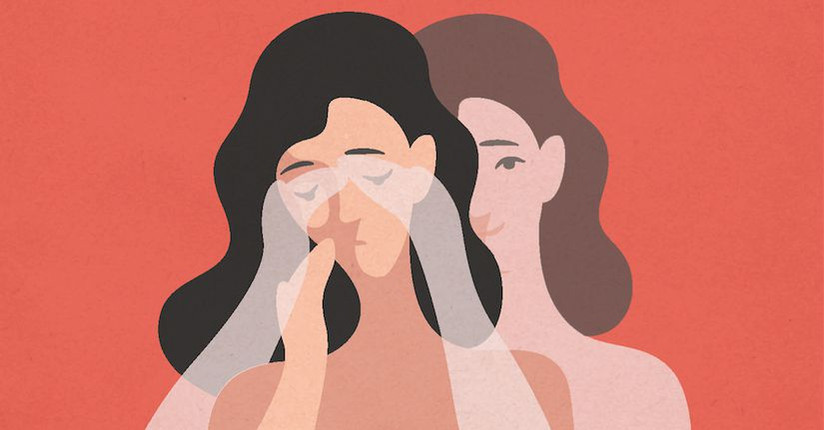Why Ehlers-Danlos Syndrome Patients Experience Light Sensitivity
Ehlers-Danlos syndrome (EDS) is a group of inherited disorders that affect connective tissues; especially skin, joints and blood vessel walls. The underlying issue is an impaired ability to produce collagen, which accounts for 25% to 35% of all our bodies’ protein.
People with EDS usually have overly flexible joints and stretchy, fragile skin. The main symptoms are: musculoskeletal pain, fatigue, and headache. Interestingly, many Ehlers-Danlos patients also describe having a strong sensitivity to light, often painting a picture of intense, light-related pain:
"A year ago I started having extreme sensitivity to light. Just one glance out the window to the sun shining on our white patio table was enough to give me a blinding, right-sided headache."
-- Pavlova, inspire.com
There is no direct tie between light sensitivity (or photophobia as it can be called) and Ehlers-Danlos Syndrome in clinical research, and we cannot truly grasp how widespread it is for patients. However, we can get a little bit closer to understanding this issue by exploring the comorbid conditions that accompany Ehlers-Danlos—and which ultimately can and do bring on severe photophobia.
Migraine
Recent studies have suggested that as many as three-quarters of patients with EDS and other hypermobility disorders may also have migraine. Not surprisingly, overlapping chronic illnesses frequently increases the symptom burden for patients; this ultimately can translate to more migraine days per month and greater severity of symptoms, even when compared with those who just have migraine.1
One theory to help explain the high incidence of migraine in people with EDS is the possibility of abnormal circulation in their brains, or problems with “cortical excitability” (the impulses that make our neurons light up) due to weakened blood vessel walls.2 There are also autonomic functions associated with blood vessel health, such as the reflex that causes our pupils to constrict in bright light. If this function is impaired, light sensitivity can result.
Light sensitivity is already a common complaint of people with migraine, and people with EDS might not only have migraine attacks but also pupils that are not normally reactive to light. Either or both conditions could cause photophobia and/or bring on other symptoms.
Dry Eye & Other Ocular Conditions
Since our eyes are primarily made up of collagen, Ehlers-Danlos Syndrome can also lead to several ocular complications—which in turn can influence the likelihood of photophobia. Dry eye may be the most common of these eye-related concerns, affecting 63% of patients; this manifests in those with EDS mostly as a result of impaired blinking processes and/or closure of the eyelids, thus resulting in inflamed eyes caused by over-exposure to the environment.3,4 In addition, other eye conditions that can occur include:
- Blurred or double vision
- Myopia (nearsightedness)
- Astigmatism
- Eye floaters
- Hyperextensible eyelids (excess skin covering the eye)
- Glaucoma
How do these issues impact light sensitivity? First off, research cites dry eye as the most common cause of photophobia, affecting a large majority (75%) of those who endure its symptoms. Second, the other eye problems listed are also believed to be made worse by light—if not outright lead to elevated sensitivities.
Fibromyalgia
The link between fibromyalgia and Ehlers-Danlos Syndrome is another intersection where light sensitivity can develop. In fact, EDS and fibromyalgia can present clinically as nearly identical conditions because of the shared symptom of joint hypermobility; therefore, it is not surprising that research has connected them.5
Sensory sensitivities, including photophobia, in fibromyalgia have been scientifically established since the early 1990s; the belief is that shared “central sensitization” that characterize both hypermobile EDS and fibromyalgia ultimately triggers pain and other neuropathic symptoms.6 It does not help that fibromyalgia is also frequently comorbid with migraine as well. Additionally, in our own survey, we found that a diagnosis of fibromyalgia may actually create a greater risk for photophobic pain and symptoms when compared with other conditions.
Given the cluster of underlying causes that predispose EDS patients to light sensitivity, it seems probable that a co-diagnosis of fibromyalgia would also increase the chances of photophobia.
What to do if EDS is the reason for light sensitivity?
Although all the above conditions can create a complicated path to relief, light sensitivity is fortunately manageable. Oftentimes, treating any of these co-occurring issues can reduce symptoms of photophobia, but there are also other simple changes that can help too. Click below to learn more.
References:
1Puledda F, Viganò A, Celletti C, Petolicchio B, Toscano M, Vicenzini E, Castori M, Laudani G, Valente D, Camerota F, Di Piero V. A study of migraine characteristics in joint hypermobility syndrome a.k.a. Ehlers-Danlos syndrome, hypermobility type. Neurol Sci. 2015 Aug;36(8):1417-24. doi: 10.1007/s10072-015-2173-6. Epub 2015 Mar 20.
2Jacome DE. Headache in Ehlers-Danlos syndrome. Cephalalgia. 1999 Nov;19(9):791-6.
3Gharbiya M1, Moramarco A, Castori M, Parisi F, Celletti C, Marenco M, Mariani I, Grammatico P, Camerota F. Ocular features in joint hypermobility syndrome/ehlers-danlos syndrome hypermobility type: a clinical and in vivo confocal microscopy study. Am J Ophthalmol. 2012 Sep;154(3):593-600.e1. doi: 10.1016/j.ajo.2012.03.023. Epub 2012 May 24.
4Kundart J (2017). Ehlers-Danlos Syndrome and the Eye. Retrieved from https://online-ce.opt.pacificu.edu/course_downloads/1411046365ehlers-danlos%20in%20the%20eye.pdf.
5Rodgers KR, Gui J, Dinulos MBP, Chou RC. Ehlers-Danlos syndrome hypermobility type is associated with rheumatic diseases. Scientific Reports. 2017;7:39636. doi:10.1038/srep39636.
6Di Stefano G, Celletti C, Baron R, Castori M, Di Franco M, La Cesa S, Leone C, Pepe A, Cruccu G, Truini A, Camerota F. Central sensitization as the mechanism underlying pain in joint hypermobility syndrome/Ehlers-Danlos syndrome, hypermobility type. Eur J Pain. 2016 Sep;20(8):1319-25. doi: 10.1002/ejp.856. Epub 2016 Feb 26.
TheraSpecs Glasses for Your Health
Try our therapeutic glasses and get relief for issues triggered by light, such as migraines, headaches, photophobia, concussion symptoms, seizures, eye health, and sleep.





